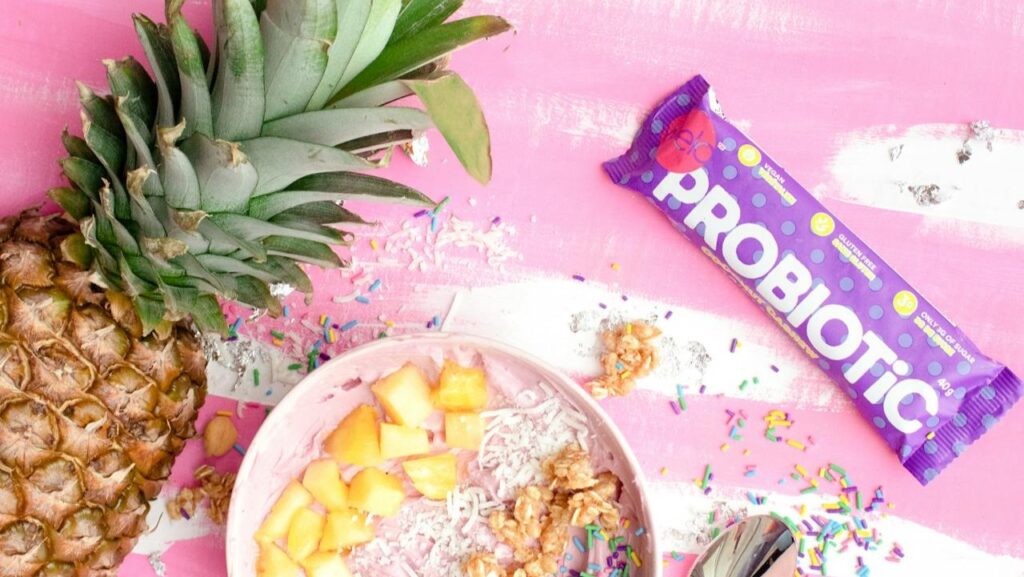The beauty industry is buzzing with talk about probiotics, prebiotics, and the skin microbiome. But what’s the real science behind these microscopic allies, and how can they transform your skin health? Let’s dive deep into the fascinating world of beneficial bacteria and discover how these tiny organisms might be the key to your most radiant complexion yet.
Understanding Your Skin’s Invisible Ecosystem
What Is the Skin Microbiome?
Your skin is home to trillions of microorganisms—bacteria, fungi, viruses, and other microbes—that form a complex ecosystem known as the skin microbiome. This invisible community works tirelessly to protect your skin from harmful pathogens, maintain optimal pH levels, and support your skin’s natural barrier function.
Think of your skin microbiome as a bustling city where different bacterial neighborhoods serve specific purposes. When this ecosystem is balanced, your skin appears healthy, resilient, and glowing. However, when disrupted, you may experience inflammation, breakouts, sensitivity, or premature aging.
The Gut-Skin Axis: Your Internal Beauty Connection
The relationship between your digestive health and skin condition isn’t just folklore—it’s backed by solid scientific research. The gut-skin axis represents a bidirectional communication pathway where your intestinal microbiome directly influences your skin’s appearance and health.
When your gut microbiome is imbalanced, it can trigger systemic inflammation that manifests as:
- Acne breakouts
- Eczema flare-ups
- Rosacea symptoms
- Premature aging
- Increased skin sensitivity
This connection explains why many people notice clearer skin when they improve their digestive health through probiotic supplementation or dietary changes.
Decoding the Probiotic Family
What Are Probiotics?
Probiotics are live microorganisms that, when consumed in adequate amounts, provide health benefits to the host. In skincare, these beneficial bacteria work both internally (through oral supplementation) and externally (through topical application) to restore balance to your skin’s microbiome.
The most researched probiotic strains for skin health include:
- Lactobacillus acidophilus: Helps reduce acne-causing bacteria
- Bifidobacterium bifidum: Strengthens skin barrier function
- Lactobacillus plantarum: Reduces inflammation and supports wound healing
- Vitreoscilla filiformis: Improves skin hydration and reduces sensitivity
Understanding Prebiotics for Skin Health
Prebiotics are non-living substances that feed and nourish beneficial bacteria. In skincare, prebiotics create an environment where good bacteria can thrive while inhibiting harmful microorganisms. Common prebiotic ingredients include:
- Inulin
- Fructooligosaccharides (FOS)
- Alpha-glucan oligosaccharide
- Chicory root extract
The Power of Postbiotics
Postbiotics are the metabolic byproducts produced by probiotics during fermentation. These include enzymes, peptides, organic acids, and other bioactive compounds that provide immediate benefits to your skin without requiring live bacteria. Postbiotics offer several advantages:
- Longer shelf life than live probiotics
- More stable in skincare formulations
- Immediate anti-inflammatory effects
- Enhanced skin barrier repair
Proven Skin Benefits of Probiotics
Acne Control and Prevention
Research published in the Journal of Clinical Medicine demonstrates that probiotics can significantly reduce acne severity through multiple mechanisms:
Oral probiotics help by:
- Reducing systemic inflammation
- Improving gut barrier function
- Modulating immune responses
- Decreasing insulin-like growth factor-1 (IGF-1) levels
Topical probiotics work by:
- Competing with acne-causing bacteria for resources
- Producing antimicrobial peptides
- Strengthening the skin’s natural defense mechanisms
- Balancing skin pH levels
Rosacea Management
Studies show that specific probiotic strains can help manage rosacea symptoms by reducing inflammation and strengthening the skin barrier. Lactobacillus casei and Bifidobacterium breve have shown particular promise in clinical trials for reducing facial redness and improving skin comfort.
Anti-Aging and Skin Barrier Support
Probiotics contribute to youthful-looking skin through several pathways:
- Collagen production: Certain strains stimulate fibroblast activity
- Hydration improvement: Enhanced ceramide production strengthens the moisture barrier
- Antioxidant protection: Probiotic metabolites neutralize free radicals
- UV damage repair: Some strains help repair DNA damage from sun exposure
Eczema and Sensitive Skin Relief
The American Academy of Dermatology recognizes probiotics as a complementary treatment for atopic dermatitis. Prenatal and early childhood probiotic supplementation has shown significant promise in preventing eczema development, while topical probiotic treatments can soothe existing inflammation.
Natural Sources and Application Methods
Probiotic-Rich Foods for Skin Health
Incorporating these fermented foods into your diet can support both gut and skin health:
Dairy-based options:
- Greek yogurt with live cultures
- Kefir
- Aged cheeses (gouda, cheddar, swiss)
Plant-based alternatives:
- Kimchi
- Sauerkraut
- Miso paste
- Tempeh
- Kombucha
- Coconut yogurt
Choosing the Right Probiotic Supplements
When selecting oral probiotic supplements for skin health, consider:
- CFU count: Look for 10-50 billion CFUs per serving
- Strain diversity: Multi-strain formulas often provide broader benefits
- Third-party testing: Ensures potency and purity
- Enteric coating: Protects bacteria from stomach acid
Integrating Topical Probiotics into Your Routine
Morning routine integration:
- Gentle cleanser (avoid harsh antimicrobials)
- Probiotic serum or essence
- Prebiotic moisturizer
- Sunscreen
Evening routine integration:
- Double cleanse if wearing makeup
- pH-balancing toner
- Probiotic treatment product
- Nourishing night cream with postbiotics
Factors That Disrupt Your Skin Microbiome
Understanding what harms your skin’s bacterial balance is crucial for maintaining healthy skin:
Environmental Stressors
- Air pollution and particulate matter
- Excessive UV exposure
- Extreme weather conditions
- Indoor heating and air conditioning
Lifestyle Factors
- Chronic stress and poor sleep
- Smoking and excessive alcohol consumption
- Poor dietary choices high in sugar and processed foods
- Over-washing or aggressive cleansing
Skincare Mistakes
- Overuse of antibacterial products
- Harsh physical exfoliation
- Products with high alcohol content
- Skipping moisturizer
Cost-Effective Strategies for Probiotic Skincare
Budget-Friendly Approaches
- Start with dietary changes before investing in supplements
- Look for multi-purpose products that combine probiotics with other actives
- Consider DIY probiotic masks using plain yogurt or kefir
- Focus on protecting your existing microbiome with gentle products
When to Invest in Premium Products
- If you have persistent skin conditions
- When transitioning from harsh treatments
- For targeted concerns like aging or sensitivity
- If you have a compromised skin barrier
Potential Side Effects and Considerations
While probiotics are generally safe, some individuals may experience:
- Initial skin purging (temporary worsening before improvement)
- Digestive upset when starting oral probiotics
- Allergic reactions to specific strains (rare)
- Interactions with certain medications
Important note: Always consult with a dermatologist or healthcare provider before starting new treatments, especially if you have compromised immunity or are taking medications.
The Future of Microbiome Skincare
Emerging research is exploring personalized microbiome testing to create customized probiotic treatments. Scientists are also investigating:
- Strain-specific targeting for individual skin concerns
- Combination therapies using probiotics with other actives
- Advanced delivery systems for better bacterial survival
- Microbiome restoration after antibiotic treatments
Your Action Plan for Probiotic Skincare Success
Ready to harness the power of probiotics for your skin? Here’s your step-by-step approach:
- Assess your current routine: Identify harsh products that may be disrupting your microbiome
- Start with diet: Incorporate 1-2 probiotic-rich foods daily
- Choose gentle cleansing: Switch to pH-balanced, microbiome-friendly cleansers
- Introduce probiotics gradually: Begin with either oral supplements OR topical products, not both simultaneously
- Monitor your progress: Give new products 6-8 weeks to show results
- Maintain consistency: Probiotic benefits require ongoing support
Frequently Asked Questions
Q: How long does it take to see results from probiotic skincare?
A: Most people notice initial improvements in skin texture and comfort within 2-4 weeks, with more significant changes in specific concerns like acne or rosacea appearing after 6-12 weeks of consistent use.
Q: Can I use probiotic skincare if I have sensitive skin?
A: Yes, probiotics are generally well-tolerated by sensitive skin types. In fact, they often help reduce sensitivity by strengthening the skin barrier. Start with lower concentrations and patch test new products.
Q: Should I take oral probiotics, use topical products, or both?
A: For optimal results, many dermatologists recommend a combined approach. Start with one method, allow your skin to adjust, then gradually introduce the other if desired.
Q: Are expensive probiotic skincare products worth the investment?
A: While some premium products offer advanced formulations, you can achieve significant benefits through dietary changes and affordable probiotic-rich foods. Invest in quality where it matters most for your specific concerns.
Q: Can probiotics replace my current acne treatments?
A: Probiotics work best as part of a comprehensive skincare approach. They can enhance the effectiveness of other treatments and may allow you to use gentler products, but consult your dermatologist before making significant changes to prescribed treatments.
The science is clear: probiotics offer a promising, natural approach to achieving healthier, more resilient skin. By understanding and supporting your skin’s microbiome, you’re investing in long-term skin health that goes far beyond surface-level beauty. Start your probiotic journey today and discover the transformative power of these microscopic allies.



